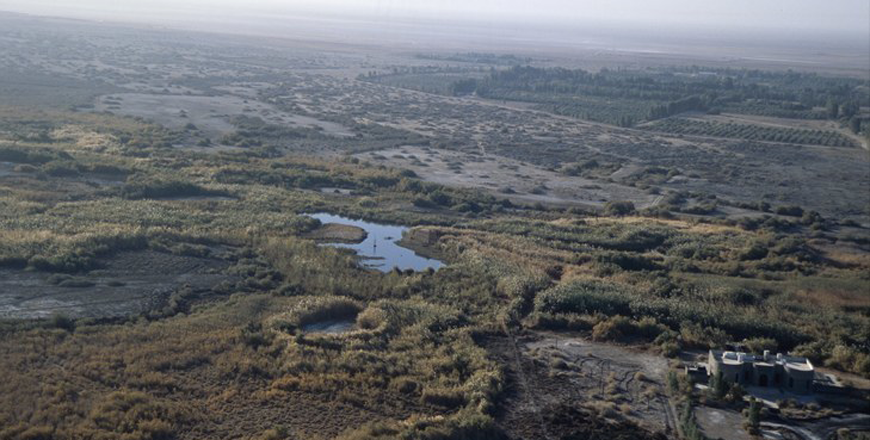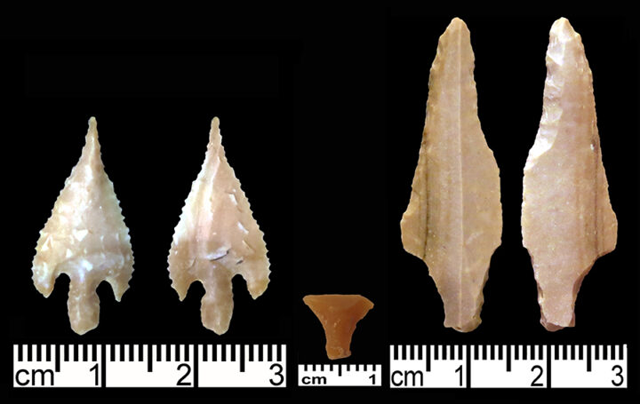You are here
Azraq Basin Prehistory Project: Focusing on lithic assemblages for chronology
By Saeb Rawashdeh - Mar 20,2024 - Last updated at Mar 20,2024

Azraq Wetland Reserve was home to different Prehistoric sites (Photo courtesy of ACOR)
AMMAN — The Azraq Basin covers some 12,000 kilometres of the north-central Jordanian Plateau and currently ranges from moist steppe in the north and west through to desert in the southeast. The Azraq oasis is located in the centre of the basin and the water created a marshland. The objective of The Azraq Basin Prehistory Project was to reconstruct the environment in the late Pleistocene and early Holocene, and to study settlement patterns and activities during the Epipalaeolithic and Neolithic.
Today, the areas of the Azraq Basin and the Black Eastern desert are desolated, barren parts of Jordan, but back in the late Epipalaeolithic and Neolithic, it was involved in the major economic and cultural transformation. The team of archaeologists studied Wadi Jilat, Wadi Uwaynid and the area around the Azraq oases.
“The largest is at the multiphase site of Jilat, which covers 19,000 metres square and probably represents a seasonal aggregation locality,” noted Brian Byrd, specialised in Prehistory of the southern Levant. Researchers split the three-part Epipalaeolithic chronology into a four-part sequence including Initial, Early, Middle and Late Epipalaeolithic
In presenting the lithic assemblages and their broad temporal trends, eight late Pleistocene industries are distinguished including: Late Upper Palaeolithic Ahmarian; Initial Epipalaeolithic Nebekian; Early Epipalaeolithic Qalkhan, Nizzana and Kharanan; Middle Epipalaeolithic Jilatan; Middle/Late Epipalaeolithic Azraq Mushabian; and Late Epipalaeolithic Natufian. These terms are heuristic devices used to convey spatial-temporal trends in the Azraq Basin, Byrd explained, and to focus future research on understanding regional variability and patterning.
The lithic assemblages from several of these sites were small but reveal diverse reduction strategies dominated by blade sensu stricto and bladelet reduction, supplemented with flake core reduction, Byrd said, adding that core types are the most often narrow ended or broad faced.
“Tools blanks were highly varied, with frequent use of flakes, overshot blades and primary elements. The most prevalent tool classes were end-scrapers, burins and non-standardised retouched pieces. Backed or retouched bladelet tools are present but not dominant, typically made with Ouchtata or marginal retouch [often on the interior side], and only occasionally backed or truncated,” Byrd underlined, adding that the Nebekian industry consists of four occupation horizons that yielded moderate-sized samples and as a whole represent the most homogeneous group of that study.
“Analyses of the late Pleistocene Azraq Basin lithic assemblages have documented a series of techno-typological trends significant to perceptions of how the Levantine Epipalaeolithic evolved, as well as to the temporal and geographical extent of its various industries,” Byrd said, adding that these have implications for interpreting hunter-gatherer interactions. Much of the Azraq Basin Epipalaeolithic sequence is represented by regionally distinctive industrial traditions, with only the Natufian having strong similarities with south- western Levant assemblages.
Therefore, the Azraq Project has provided ages and technological data to assert the onset of the Epipalaeolithic while the backed bladelet assemblages from the Initial Epipalaeolithic Nebekian industry represented the best evidence for the origins of the Epipalaeolithic, Byrd stressed, adding that The Azraq Project has also revealed that the micro burin technique was used for truncating backed tools earlier than previously recognised.
“The technique was then employed routinely throughout the Epipalaeolithic in a number of different ways depending on the tools being manufactured, which included the untanged ends of Jilat knives,” the archaeologist said, adding that it does not occur in some assemblages, such as the Kharanan industry.
Related Articles
AMMAN — Wadi Hasa is one of the most southern wadis between the Dead Sea and the Central Plateau.
AMMAN — The site of Wadi Aghar, located in southern Jordan, was investigated for the first time in 1983/84.
AMMAN — The projects dedicated to the Prehistory of Jordan became prominent in the last 30 years, showing an increased academic interest by



















